
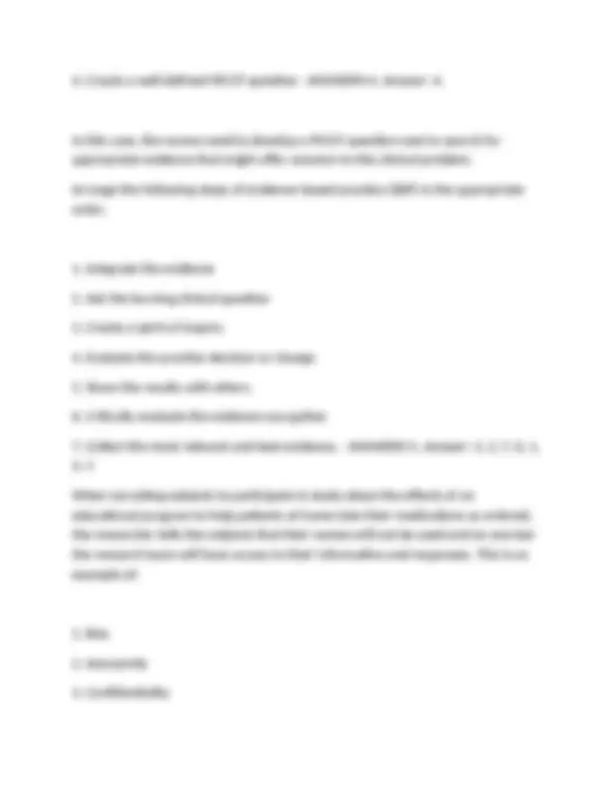
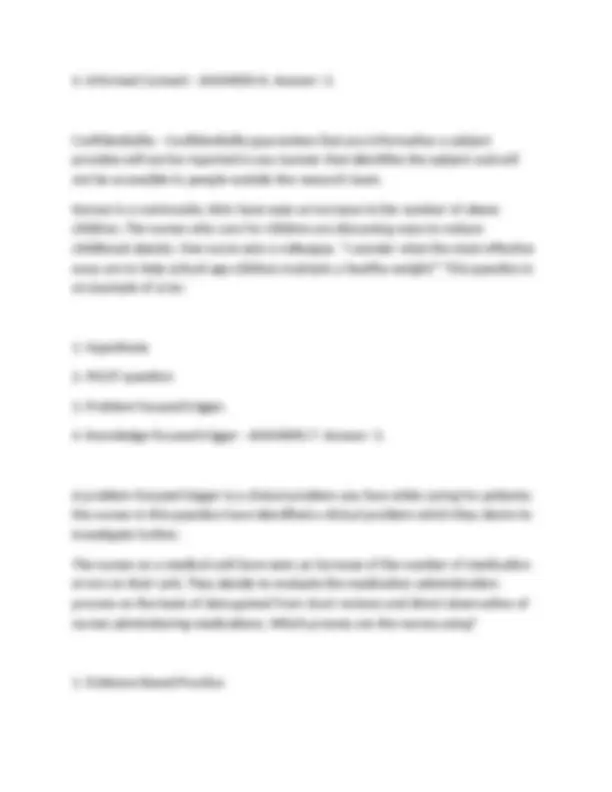
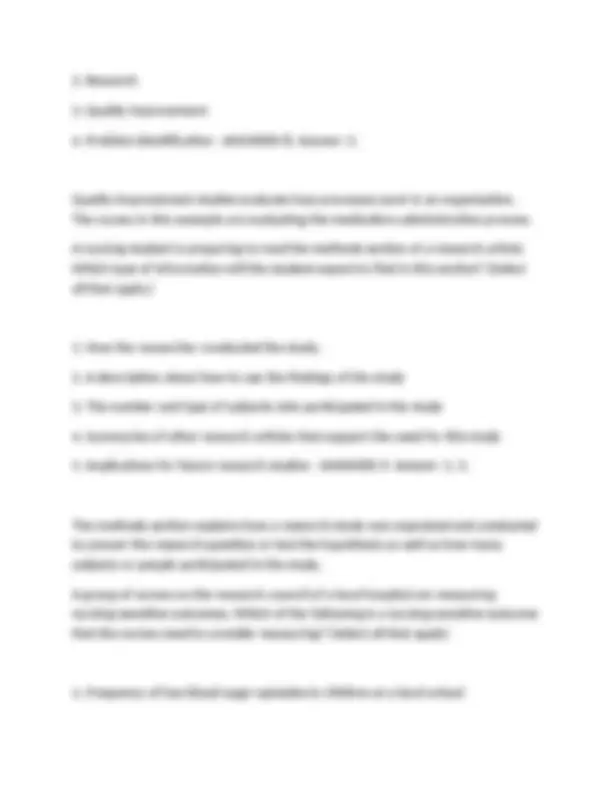
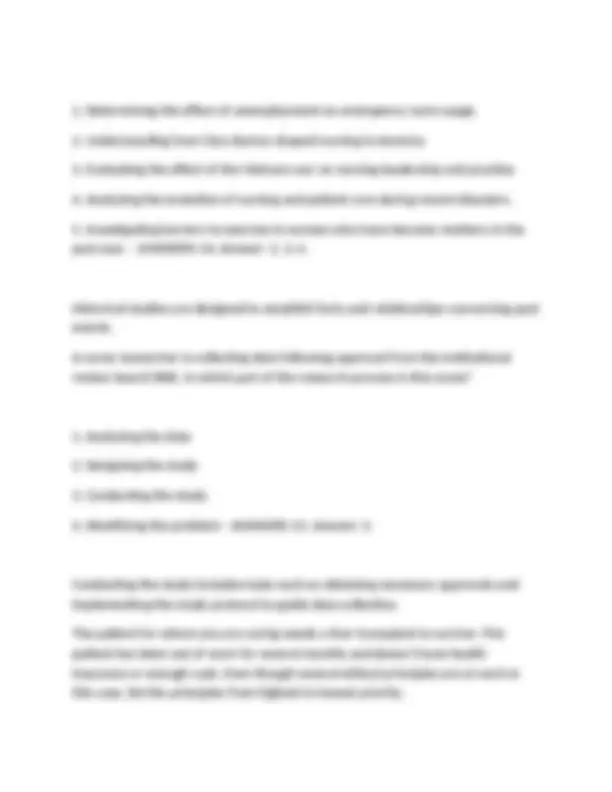
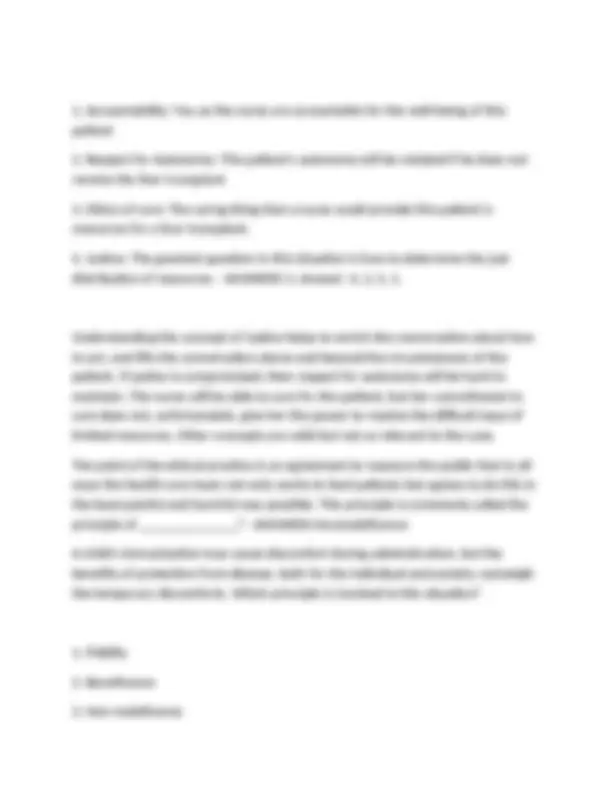
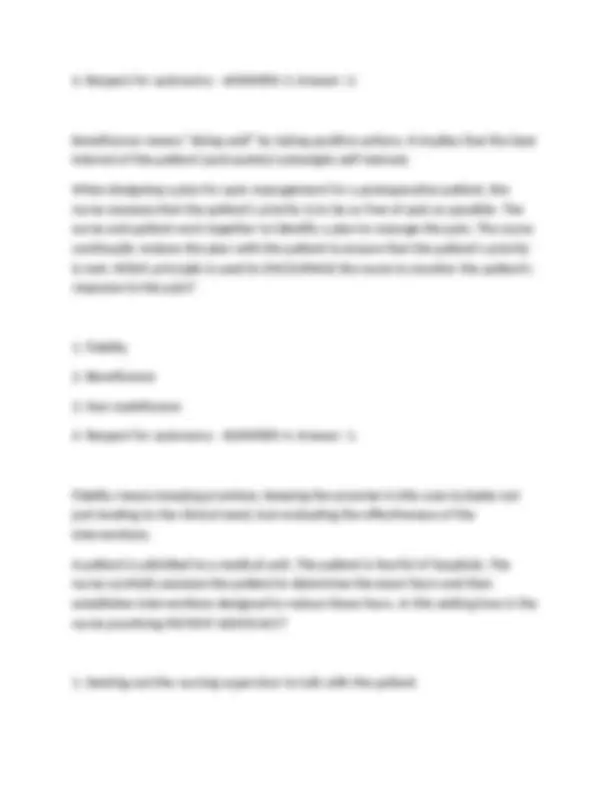


Study with the several resources on Docsity

Earn points by helping other students or get them with a premium plan


Prepare for your exams
Study with the several resources on Docsity

Earn points to download
Earn points by helping other students or get them with a premium plan
Community
Ask the community for help and clear up your study doubts
Discover the best universities in your country according to Docsity users
Free resources
Download our free guides on studying techniques, anxiety management strategies, and thesis advice from Docsity tutors
NUR 100 Exam 2 Questions With Complete Solutions 2025 Graded A+ NUR 100 Exam 2 Questions With Complete Solutions 2025 Graded A+ NUR 100 Exam 2 Questions With Complete Solutions 2025 Graded A+
Typology: Exams
1 / 12

This page cannot be seen from the preview
Don't miss anything!







A nurse researcher studies the effectiveness of a new program designed to educate parents to promote the immunization of children. The nurse divides the the parents randomly into two groups. One group receives the typical educational program and the other group receives the new program. This is an example of which type of study?
O stands for outcome; in this PICOT question, the outcome the nurse is concerned about is anxiety. The nurse researcher wants to know which factors are associated with a person's decision to exercise. The nurse distributes a survey to people who recently joined an exercise wellness program and analyzes the data to determine which factors and characteristics are most significantly linked to the decision to start exercising. Which type of research study is this?
A nurse is reading a research article. The nurse just finished reading a brief summary of the research study that included the purpose of the study and its implications for nursing practice. Which part of the article did the nurse just read?